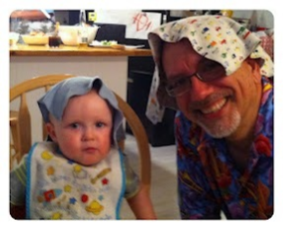
Podcast: Play in new window | Download (Duration: 27:02 — 24.8MB) | Embed
Subscribe: Apple Podcasts | Spotify | Email | RSS | More
Danny & Oscar muse about tension between thumbnails & descriptions, superconductors & the environment, health hats origin, life & bad habits, like snarkiness.
About the Show
Welcome to Health Hats, learning on the journey toward best health. I am Danny van Leeuwen, a two-legged, old, cisgender, white man with privilege, living in a food oasis, who can afford many hats and knows a little about a lot of healthcare and a lot about very little. Most people wear hats one at a time, but I wear them all at once. I’m the Rosetta Stone of Healthcare. We will listen and learn about what it takes to adjust to life’s realities in the awesome circus of healthcare. Let’s make some sense of all this.
We respect Listeners, Watchers, and Readers. Show Notes at the end.
Watch on YouTube
None today. Check back later
Read Newsletter
The same content as the podcast, but not a verbatim transcript. Could be a book chapter with images. download the printable transcript here
Contents
Episode
Podcast intro
Welcome to Health Hats, the Podcast. I’m Danny van Leeuwen, a two-legged cisgender old white man of privilege who knows a little bit about a lot of healthcare and a lot about very little. We will listen and learn about what it takes to adjust to life’s realities in the awesome circus of healthcare. Let’s make some sense of all of this.
Proem
Welcome to this third bonus episode. We’re busy producing the next Emerging Adults with Mental Illness episode about Cultural Humility. It’s taking longer than expected because we’re combining three 30–40-minute dynamite interviews into one episode, and my team has new school semester obligations. So, Oscar and I chatted, sitting on his couch. I asked him to ask me anything, and he did. No video today. We might put one up in the future. What a hoot. Here goes.
Health Hats: Oscar first asked me about how people find my material, whether via the web, podcast platforms, or YouTube. We talked about titles, thumbnails, descriptions, click-through rates.
Titles, Thumbnails
Health Hats: Titles are hard.
Oscar: Titles? In what way are titles hard?
Health Hats: For example, in my series on Emerging Adults with Mental Illness, I have 15 episodes or so. I have a few words in the title and then the number in the Emerging Adults with Mental Illness series. The unique thing is those few words. I did that because I wanted people to know it’s part of a series. But Emerging Adults with Mental Illness has so many characters that I’m trying to keep it to 60 characters. Okay. Then, it doesn’t leave that many characters for something to be unique.
Oscar: So, then what if you put the emerging adults with mental illness, and you put it in the thumbnail. You put those like words, like text, in the thumbnail.
Descriptions
Health Hats: Or in the description.
Oscar: When a viewer looks at the video, they’ll see the, maybe, the thumbnail for a brief second, they’ll see the title, and then they’ll, it’ll probably like autoplay. They won’t see the description until they click on it, and if you want to know, if you wanted them to know that it’s part of a series, then you could do it in the thumbnail. Of course, that could mess up your captivating thumbnail.
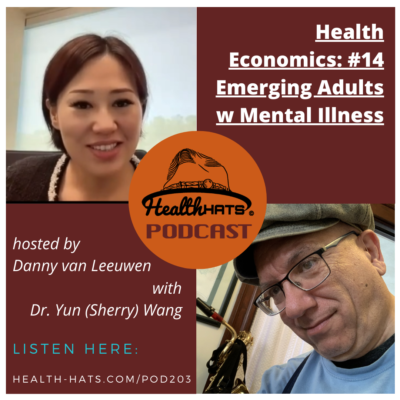 Health Hats: That’s a lot of words for a thumbnail. It is hard. So, I try to pay attention to the title and the headings of the description. There’s a tension between being descriptive of what’s in the section or catchy.
Health Hats: That’s a lot of words for a thumbnail. It is hard. So, I try to pay attention to the title and the headings of the description. There’s a tension between being descriptive of what’s in the section or catchy.
Oscar: Okay. Interesting, I feel like that’s always difficult. Most people, especially on YouTube, try to minimize descriptive content. I’m not sure that’s really what you want. And they want it to be captivating. I don’t think this is right for, say, your audience or who you’re trying to project to. People will click on something because what they’re shown, like the slight taste of the video, right? That creates a sort of suspense. And they’ll have generally blurred-out images, like blank lines or missing lines of text, right? And the reason is to captivate people into clicking to see what the outcoming result is. And this, in turn, yes, as you’re saying, makes the video less descriptive. But I don’t think that’s exactly what you want for your description. It’s an idea, right?
Click-through
Health Hats: What we’ve been doing is talking about the initial look glance that fleeting seconds where it seems like the way people use YouTube or Instagram or any social media is that there’s a scroll and you get a feed, and you’re scrolling through. If that’s how you approach it, or if you’re the public that you’re trying to reach, the audience that you’re trying to reach, and you’re trying to grab their attention, it’s like grabbing their attention as there’s a scroll. Yeah, that’s what we’ve been talking about.
Oscar: So, what that kind of idea is that it’s a mathematical statistic called a click-through rate. What click-through rate is the number of people who see it on their feed? I think it’s officially called a recommended list, right? It’s like how many people see it, and when they see it, they click on it. Yes. And those factors that determine click-through rate.
Health Hats: Another approach seems to be that you’re looking for people with a specific interest. Let’s take the emerging adults with mental illness. I’m using the term emerging adults, which is not commonly used. People would maybe say young adults or adolescents. And I’m purposefully using emerging adults because it means something different. But it’s counter against what I’m trying to do, which is, if I’m trying to reach new people, then, and they’re not tuned in to what an emerging adult is, they’re not going to see it.
Who opens, downloads
I did a recent podcast with a newsletter, a podcast, and a video, and it was about health economics. Over five years and 205 episodes, I have an average of 95 downloads per episode over a week or two weeks. For this episode, which was three episodes back, there were 250 downloads on the first day. Just out there. So, the question to me is, why? How did people find it? What happened? I have no idea. One theory is it’s a bot. It isn’t about people, but I will assume that’s not true because I have no idea how I’d know that.
Oscar: I don’t know precisely what podcasting platforms you use. And I don’t know if there’s a way to tell on your podcast which platform you’re on has the most downloads.
Health Hats: I don’t know. I don’t have good stats, so that I could get better stats. Anyway, I don’t know.
Superconductors, trains, speed
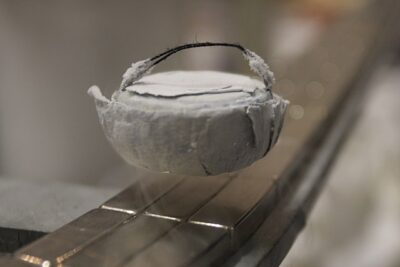 Oscar: I could try to ask you another question if you want. What do you think of superconductors?
Oscar: I could try to ask you another question if you want. What do you think of superconductors?
Health Hats: What do I think of superconductors? Yeah. Meaning chips that go into computers?
Oscar: No, that’s different.
Health Hats: What’s a superconductor?
Oscar: A superconductor can be different types of materials or different chemical compounds, generating a strong magnetic field. Very strong. I believe it’s negative 32, maybe less when cool to extremely low temperatures, I don’t know, degrees Kelvin. It generates a strong magnetic field at these low temperatures, and the magnetic field is so strong that it can levitate on other magnetic objects with an opposite charge.
Health Hats: And how’s that used?
Oscar: The thing I’ve been mainly researching has been the superconductive usage in the SC Maglevs. These are magnetic levitation trains. Okay. And it’s a newer type of technology than I think it’s called electromagnetic levitation, which is different. This way, they don’t have to propel the train from the bottom. They propel the train from the sides, which will still levitate the train? Magnetic levitated trains. And Maglevs. Have you heard of Maglevs before?
Environmental impact
Health Hats: I don’t know anything about it, and I don’t have an opinion. I guess my opinion is… I guess my question would be, how is it used? How does it help people live better lives daily? I would ask what the environmental impact of the materials is.
Oscar: Interesting., I will probably go with the most complex question first – the environmental impact. I’m not sure. As far as I’m aware, it doesn’t have any carbon emissions. But it does have electricity for the electromagnetic coils in the track. And I’m not exactly sure, but it is basically what a magnetic levitated train, specifically the X SC maglev, is made to do. It’s made to traverse long distances fast. It’s something that a plane would typically cover. And obviously, planes emit much more carbon dioxide and harmful chemicals into the atmosphere than cars. So, this is what this idea is to make it so it’s not as much as, say, planes. In Japan, they’re building a maglev track from two cities. I think it’s Tokyo and Osaka. It’s made to go faster than it, go faster, and be more environmentally sustainable than a plane.
Environmental sustainability
Health Hats: Okay, so there’s environmentally sustainable, meaning what’s gets emitted. Yes. But then there’s environmental sustainability in terms of what gets mined to make this thing interesting. So, we both have electric cars, right? And so, your parents and we are into them because it’s not gas-powered, right? But the lithium batteries, I have to ask, what’s the impact of mining lithium and whatever else goes into them? And when you talk about superconductors, what are the ingredients, and where do the ingredients come from?
Oscar: I’m going to tell you right now. I think the ingredients are a complex mix of chemical compounds, including some sort of silicone or silico or something like that. I’m not familiar with this kind of stuff. And it’s like a ceramic-like material. So, it’s probably manufactured in a lab. But exactly where they get it, I’m not sure. And I don’t know. And obviously, I’m not an expert on superconductors at all.
How does it benefit people?
Health Hats: The other part of the question was, how does it benefit people, and does it benefit people because they get there faster?
Oscar: They get there faster without the use of complex planes and stuff.
Health Hats: And I guess faster is better.
Oscar: So yeah, I think that’s what it’s like generally. That’s the idea, anyway. I think that’s generally what humans think. Faster is better, more efficient.
Health Hats: One of the reasons that we’ve done the Camino, hiked the Camino is because it’s slow. We fly obviously to get to Spain or Portugal, but then you’re hiking, or me, I’m motoring in my wheelchair, and going slow. Going slow you see many different things. But then I went to D. C. for a conference or a meeting last week. I could have taken the train, and it would have taken eight or nine hours. And it took two hours to fly. Ask another question.
Why do you enjoy hats?
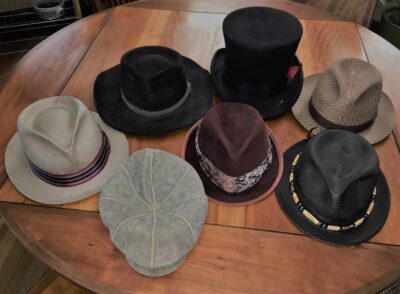 Oscar: Why do you enjoy hats?
Oscar: Why do you enjoy hats?
Health Hats: Why do I enjoy hats? One of the reasons I enjoy hats is that I have a bald head. And it keeps my head warm.
Oscar: You’ve worn hats long before you had a bald head.
Health Hats: I do, you’re right. Okay. I don’t know the chronology of this, but since my brand is health hats. It’s wearing hats that are fun. I feel like it’s a statement, recognizable, and I’m a character.
Oscar: Good for you.
Health Hats: I have this new hat from Salmagundi. I’m on virtual calls a lot. And I video myself interviewing, so I can’t wear headphones and a fedora, right? When I went to Salmagundi, I said I wanted another hat I could wear with headphones. People recognize me when I go places, and I’m the hat guy, and people like my hats, which are a fashion statement.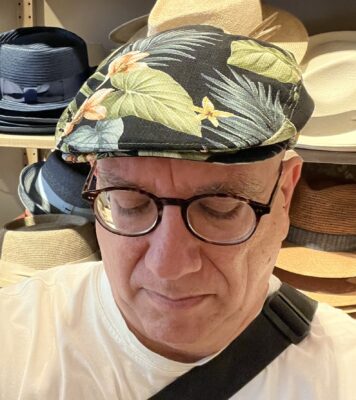
Oscar: So, it’s your brand, but I imagine you wore hats, and there’s a reason you decided to call yourself Health Hats, unlike the other way around.
Health Hats: No, really, the way I got the name Health Hats was from my friend Jane Sarasohn Khan, who is a health economist. When I met her, I followed her blog. I don’t know if it’s daily, but at least a few times a week. And they’re fascinating, and so when I met her, I said I love your blog, but I could never do that. I don’t have that much to say, and blah, blah, blah. And she said tell me your story. And my story is. I’m a person with MS. I’m a care partner to several people, end of life, I’m a nurse. I’ve led some electronic health record implementations. I’ve been in the C suite of healthcare. I wear a lot of hats. And she’s the one who said, first, you have great stories to tell. So, you should blog, and you should call yourself Health Hats.
Oscar: There you go.
Health Hats: I think that the hats followed that. Not before.
Oscar: Okay, I find that fascinating. I never knew that.
Health Hats: Yeah. What do you think of my hats?
Oscar: I think they’re interesting. You just have the entire hat collection in the room.
Health Hats: I do. You know you’ve seen my business card, right? My business card is you and me. And you’re like less than one-year-old. And you liked hats. You were bummed out with me that day that I wasn’t wearing a hat. So, you put blankies on our heads. And your mom took the picture. And I still use that hat on my business card of the two of us with blankies on our heads. I thank you for that.
Plug
I need help to keep creating without impacting our retirement funds. I’ve expanded my podcast this year to include video; the costs and time needed have surged. Although my queue of episodes ready to produce grows, I can only manage monthly episodes. I need to build my production team further. You can help.
Visit health-hats.com/support for ways to contribute. Choose a monthly subscription with bonus content, Zoom meetings with me and others, personal Bari Sax MP3s, coaching sessions, and more.
Occasional donations are also welcome, and you can still subscribe for free to enjoy bonus episodes. You can also recommend us through email, social media, or postcard – postage on us! Visit health-hats.com/support. Your support is deeply appreciated. Thank you.
Life, the Universe, and Everything
Oscar: You’re welcome, I’ll ask a different question. What do you think about life, the universe, and everything?
Health Hats: Life and the universe and everything? Oh, that’s a huge question. I’ll tell you what I think. I think everything comes to an end.
Oscar: Interesting. Okay.
Health Hats: Health and decision-making about the best health are essential in my work. Some of the most critical decisions we get to make are about our death.
Oscar: Sometimes you don’t have the time to prepare.
Health Hats: You don’t, right? But I advocate for people to think about it. And one of the things I think about all this talk about climate change and how we’re destroying the Earth. I think it’s going to end. That’s the ordinary course of life. Our habits are bad. And we are hastening the end. But we think there is something terrible about it ending.
Oscar: And what do you mean by it? The world?
Health Hats: The world. Human life on Earth.
Oscar: Okay. Yeah. Alright. That was a clarification.
Health Hats: Yeah. I think that it will come to an end or change dramatically.
Oscar: It’s already changed dramatically.
Health Hats: It has. I guess one of the ways I think about life is harm reduction. All sorts of risks and harm can befall us, and how can we reduce harm, but we’re all going to die, and the human race is going to die, and it could be that all life on the Earth will die. And that, to me, that’s the way it is.
Oscar: There you go.
Health Hats: That was a there’s an answer to a huge question.
Oscar: Okay, interesting. Maybe that’s Earth specific.
Health Hats: But yes. What were you thinking when you asked the question?
Oscar: I just couldn’t think of different questions, so I just decided what you think of life, the universe, and everything.
Health Hats: Okay, so that’s just the biggest question you could think of.
Oscar: Oh yeah, totally. It wasn’t very serious, but you took it very seriously. I compliment you on that.
Health Hats: Thank you.
Oscar: You’re welcome.
Health Hats: Ask me another one.
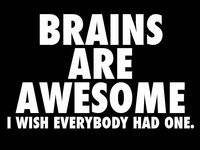 Snarkiness
Snarkiness
Oscar: Okay. What do you think of snarkiness?
Health Hats: Snarkiness. First, I think snarkiness is a great word. To me, it means sarcastic with a little dig. There are times when I can be snarky.
Oscar: Oh yeah, I know.
Health Hats: I don’t think I’m at my best when I’m snarky.
Oscar: There you go.
Health Hats: What do you think of snarky?
Oscar: I think there’s a time and place for snarky.
Health Hats: Yeah, like what?
Oscar: I don’t know. Someone says something that’s, I guess, or someone’s telling you to do something that doesn’t make a lot of sense.
Health Hats: Yeah. I don’t know. I think it’s mostly a bad habit.
Oscar: Definitely.
Health Hats: The person that I’m most often snarky with is Ann. And she totally does not deserve it. It’s like I can’t help myself. You know what I mean? Out it comes—just this sarcastic with a dig.
Oscar: There you go.
Health Hats: And I just think, oh man. As it comes out of my mouth, did I need to say that anyway? That was a good question.
Call to action
I need help to keep creating without impacting our retirement funds. I’ve expanded my podcast this year to include video; the costs and time needed have surged. Although my queue of episodes ready to produce grows, I can only manage monthly episodes. I need to build my production team further. You can help.
Visit health-hats.com/support for ways to contribute. Choose a monthly subscription with bonus content, Zoom meetings with me and others, personal Bari Sax MP3s, coaching sessions, and more.
Occasional donations are also welcome, and you can still subscribe for free to enjoy bonus episodes. You can also recommend us through email, social media, or postcard – postage on us! Visit health-hats.com/support. Your support is deeply appreciated. Thank you.
Reflection
Oscar and I chat weekly for an hour via Zoom since 2019. We started when I was concerned about my Pokeman illiteracy. It’s a language I never could learn. We worked at it for six months. Then we decided to move on – Opa, you just don’t get this, do you? We read Tom Sawyer and Huck Finn together. Wrote a story. Now we share music and video editing. I learn a ton. This episode is a peek inside those conversations. We go absolutely anywhere. Opa heaven.
Podcast Outro
I host, write, edit, engineer, and produce Health Hats, the podcast, with assistance from Kayla Nelson and three van Leeuwens, Joey, Leon, and Oscar. I play Bari Sax on some episodes alone or with the Lechuga Fresca Latin Band. I buy my hats at Salmagundi Boston. I’m grateful to you, who have the most critical roles as listeners, readers, and watchers. See the show notes, previous podcasts, and other resources through my website, www.health-hats.com, and YouTube channel. Please subscribe and contribute. If you like it, share it. See you around the block.
Episode Notes
Please comment and ask questions
- at the comment section at the bottom of the show notes
- on LinkedIn
- via email
- YouTube channel
- DM on Instagram, Twitter, Mastadon to @healthhats
Production Team
Web and Social Media Coach, Dissemination Kayla Nelson @lifeoflesion
Leon and Oscar van Leeuwen edit
Music on intro and outro by permission from Joey van Leeuwen, Drummer, Composer, and Arranger including Moe’s Blues for Proem and Reflection
Other Credits
Images
Vulture Couple by Rich Rieger used with permission
Woman and clown by Diana Feil on Unsplash
Thumbnail created by Kayla Nelson
Superconductor image By Henry Mühlpfordt – Own work, CC BY-SA 3.0, https://commons.wikimedia.org/w/index.php?curid=9491383
Photo of 7 hats by Health Hats
Image of new hat by Health Hats, hat from Salmagundi Boston
Snarkiness image from https://www.pinterest.com/marlizbeth/random-snarkiness/
Disclaimer
The views and opinions presented in this podcast and publication are solely my responsibility and do not necessarily represent the views of the Patient-Centered Outcomes Research Institute® (PCORI®), its Board of Governors, or Methodology Committee. Danny van Leeuwen (Health Hats)
Inspired by and grateful to Oscar, Leon, and Joey van Leeuwen, Kayla Nelson, Kate Gleeson, Anica Madeo, Ann Boland
Creative Commons Licensing
The material found on this website created by me is Open Source and licensed under Creative Commons Attribution. Anyone may use the material (written, audio, or video) freely at no charge. Please cite the source as: ‘From Danny van Leeuwen, Health Hats. (including the link to my website). I welcome edits and improvements. Please let me know. danny@health-hats.com. The material on this site created by others is theirs, and use follows their guidelines.
